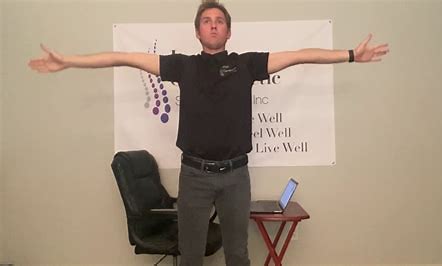Our bodies are designed to move, yet our work often means
staying in a position for long periods of time. To avoid injury or fatigued
muscles we’re told to take a break for at least five minutes every 45 to 60
minutes. But is there any value in taking shorter, 30 to 60-second breaks? It
turns out there is.
We all know the benefits of the lunch break. A 30-minute
pause in your working day gives your body and brain the chance to recharge. But
often we need a little more than a single break in the day. Enter the
microbreak – any brief activity that breaks up the monotony of a physically or
mentally draining task. Although tiny, microbreaks can make a big difference to
your day.
Lasting anywhere from a few seconds to a few minutes, a
microbreak is a brief, informal break from your computer screen or workstation.
You might find you naturally take microbreaks to chat to a colleague or make a
coffee. If you work from home, microbreaks like these might not be such a
regular part of your day.
Why microbreaks matter
Research has shown taking microbreaks can increase comfort
and reduce muscle fatigue and risk of injuries, particularly when stretches are
included in the break. They can help us cope with long periods at our desks by
taking the strain off certain parts of our bodies – such as the neck – that
we’re using all day.
When your muscles are fatigued, they don’t do their job as
well, so they need to rest occasionally to recover. Muscles recover very
quickly from low levels of fatigue, but they take much longer to recover from
high levels of fatigue, when they are tired and sore.
Micropauses of 30 to 60 seconds, every 10 to 20 minutes,
will relax your muscles and restore blood flow. These small changes to your
working activity allow you to change posture, position and eye focus. Studies
show taking microbreaks may also improve concentration, productivity, stress
and mood.
Combining microbreaks with viewing green space may be even
better. Studies found that participants who were given a break looking at a
photo of lush green roof, as compared to a concrete one, made fewer errors and
were able to concentrate better. So if you can take time to look at nature
through the window, on a walk outside, or even on a screen saver, your
performance and attention is likely to benefit.

How to take a microbreak
Give yourself a rest from a repetitive task or position by
taking a microbreak of up to 60 seconds every 20 minutes.
Try the following:
- Eye break. Use the time to look
away from your computer to help ease eye strain, symptoms of which include dry,
irritated eyes, blurred vision, neck and back pain and headaches. Use the
20/20/20 rule: every 20 minutes, shift your eyes to look at an object at least
20 feet away (six metres) for at least 20 seconds.
- Deep breathing. Focus on your
breath for a few seconds to give your mind a break. Breathe in for four
seconds, hold for four seconds and out for four to five seconds. Repeat three
times.
- Shoulder shrug. Inhale deeply and
gently lift your shoulders up to your ears. Hold for a few seconds, then let
them slowly fall. Repeat three times.
- Chin tuck. Sit up straight with
your shoulders back. Now imagine drawing your chin back towards your spine.
Hold for 10 seconds, then relax.
- Back twists. Sit on the front of
your seat, both feet on the floor, with a gap between your back and the back of
your chair. Cross your arms lightly in front of your chest and slowly twist
your upper body from side to side as far as is comfortable. Repeat a few times
each way.
- Neck stretch. Start with your
head squarely over your shoulders and your back straight. Lower your chin
toward your chest and hold for 10 to 15 seconds. Relax and slowly lift your
head back up. Then tilt your chin up to the ceiling, bringing the base of your
skull toward your back. Hold for 10 seconds and return to the start position.

- Side tilt. You can do this
standing or sitting. Gently tilt your head toward your right shoulder until you
feel the stretch (don’t raise your shoulder). Hold the stretch for 5-10 seconds,
then return to the start position and repeat on the other side.
- Leg extensions. While you’re
sitting, pull in your tummy then slowly extend each leg in turn and lower back
down.
- Tennis ball roll. Give your feet
a gentle massage. With your shoes off, roll the arch of your feet over a tennis
ball back and forth for about 30 to 60 seconds.
- Take a stand. Set a timer to
remind you to stand up for at least every 30 minutes. While you’re standing,
place your hands on your waist and gently arch your back, going no further than
is comfortable.
Need a bit of fun in your downtime?
There could be some benefits from watching those funny cat
videos you love. While it’s best to take a break from the screen to move, one
study found that humour can have an energising effect when you’re trying to do
a complex task.
A study done on 124 students found that when they were given
a boring task and then exposed to funny videos (an episode of “Mr Bean”) the
students worked twice as long as those who watched videos on neutral subjects.